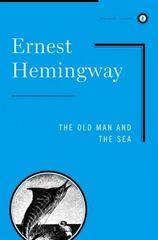The Old Man and the Sea


Ernest Hemingway's The Old Man and the Sea is a timeless masterpiece that portrays the struggles of an aging Cuban fisherman named Santiago as he embarks on an epic journey to catch a giant marlin in the Gulf Stream. Published in 1952, this novella was awarded the Pulitzer Prize for Fiction the following year and remains one of Hemingway's most enduring works.
The story begins with Santiago, a skilled fisherman, enduring a long streak of bad luck. He has not caught a fish in 84 days, and his young apprentice, Manolin, has been forced by his parents to leave him and join a more successful boat. Despite his age and the odds against him, Santiago refuses to give up his lifelong passion for fishing and sets out alone in his small skiff, determined to catch a great fish that will bring him fame and fortune.
On the eighty-fifth day of his unlucky streak, Santiago sails far out to sea, beyond the sight of land, and hooks a magnificent marlin that tests his skill, strength, and courage to the limit. The battle between the old man and the fish lasts for three days and nights, during which Santiago endures hunger, thirst, fatigue, and pain, and fights off sharks that attack his catch. As the struggle intensifies, Santiago reflects on his life, his loneliness, his love for the sea and the creatures that inhabit it, and his determination to prove himself as a worthy opponent of the marlin.
The Old Man and the Sea is a story of human resilience, endurance, and determination, set against the backdrop of the natural world. Hemingway's sparse, yet powerful prose captures the essence of the sea, the sky, and the creatures that inhabit them, and immerses the reader in Santiago's journey, both physical and emotional. The novella's themes of pride, courage, and the struggle against adversity are universal and timeless, and resonate with readers of all ages and backgrounds.
One of the most remarkable aspects of The Old Man and the Sea is Hemingway's ability to convey so much through so little. His minimalist style, characterized by short, simple sentences and a lack of adjectives and adverbs, creates a sense of clarity and directness that allows the reader to focus on the essentials of the story. The novella's brevity, at only 127 pages, adds to its power and impact, as every word and image carries weight and significance.
At its core, The Old Man and the Sea is a story of human struggle and triumph, a testament to the enduring spirit of the individual, and a celebration of the beauty and mystery of the natural world. Hemingway's timeless masterpiece will continue to captivate and inspire readers for generations to come, reminding us of the power of determination, perseverance, and the human spirit in the face of adversity.